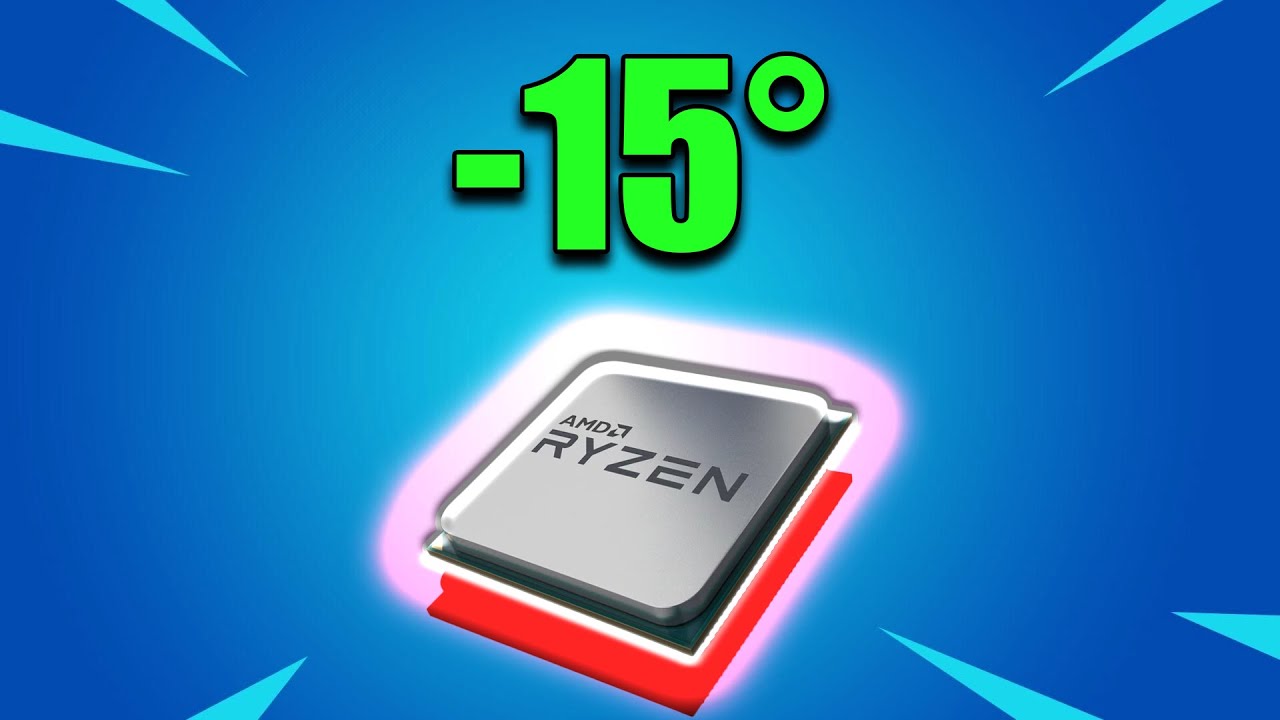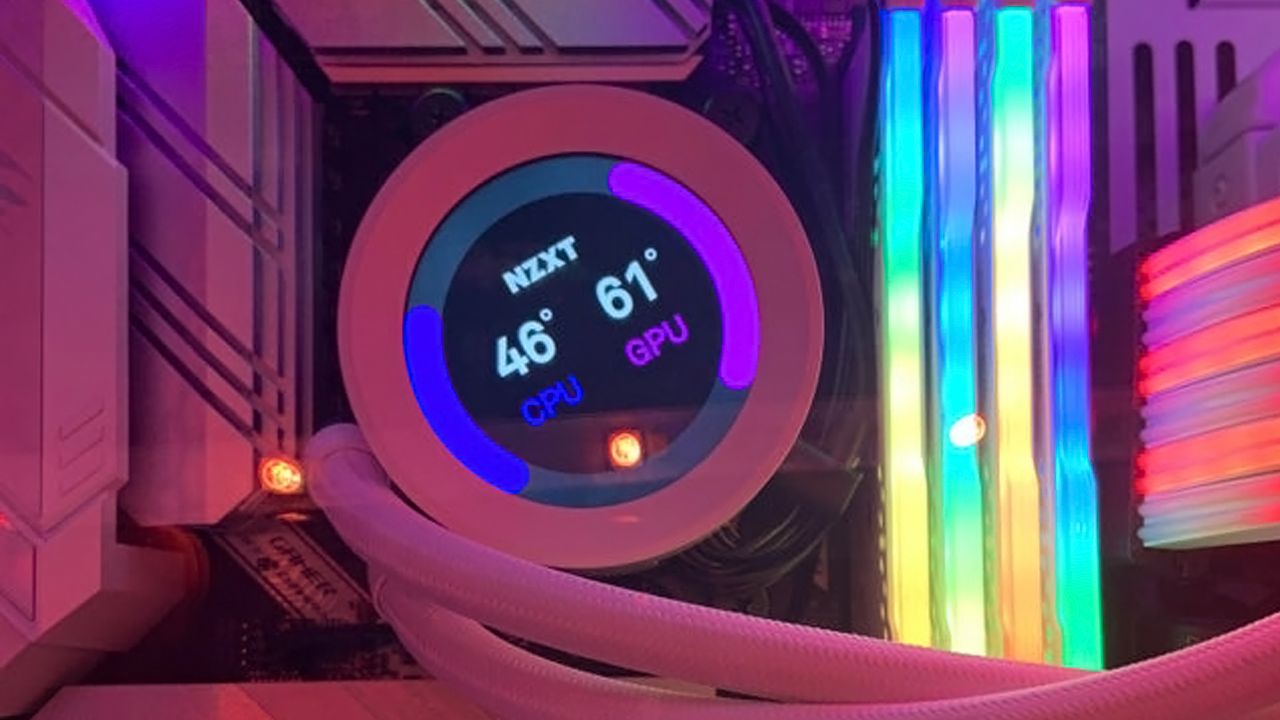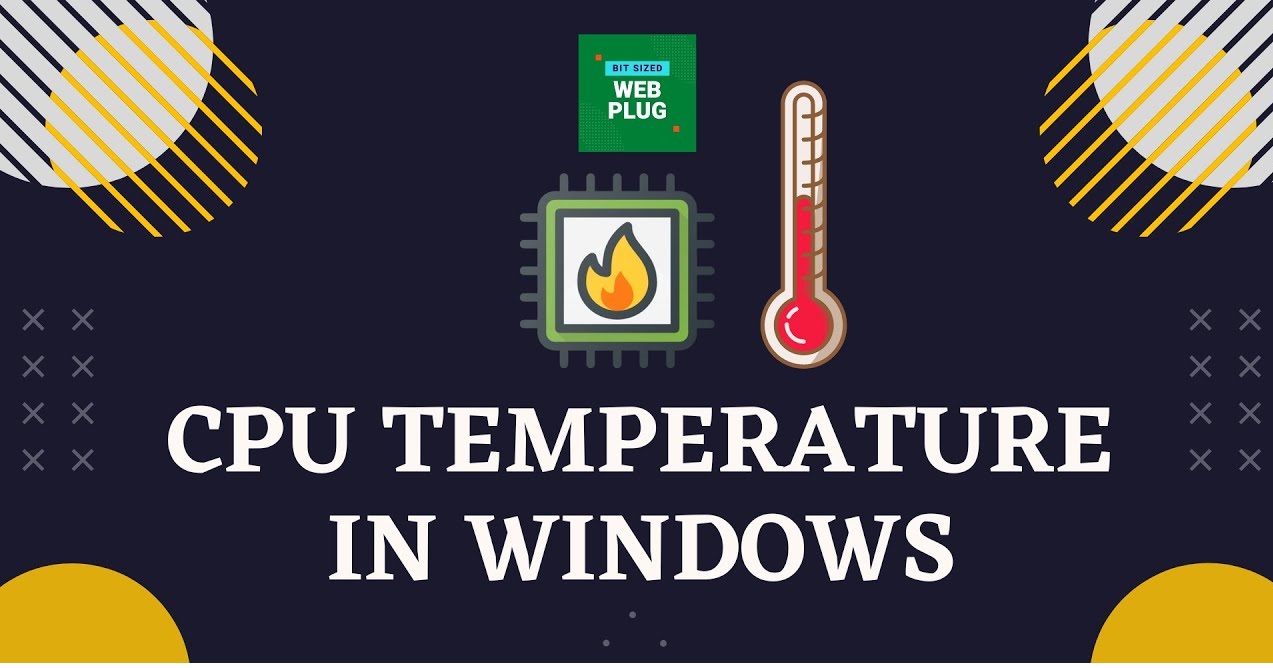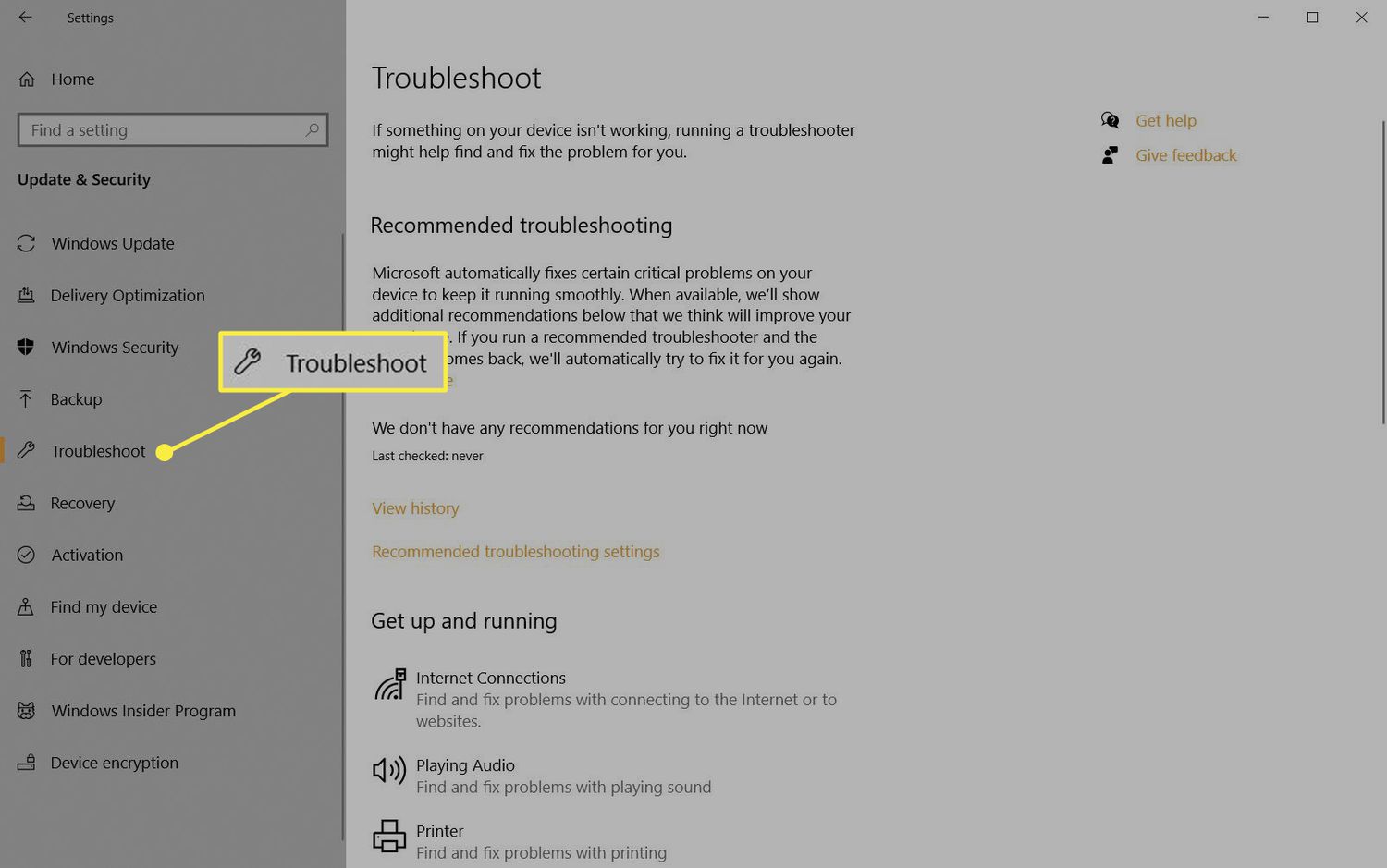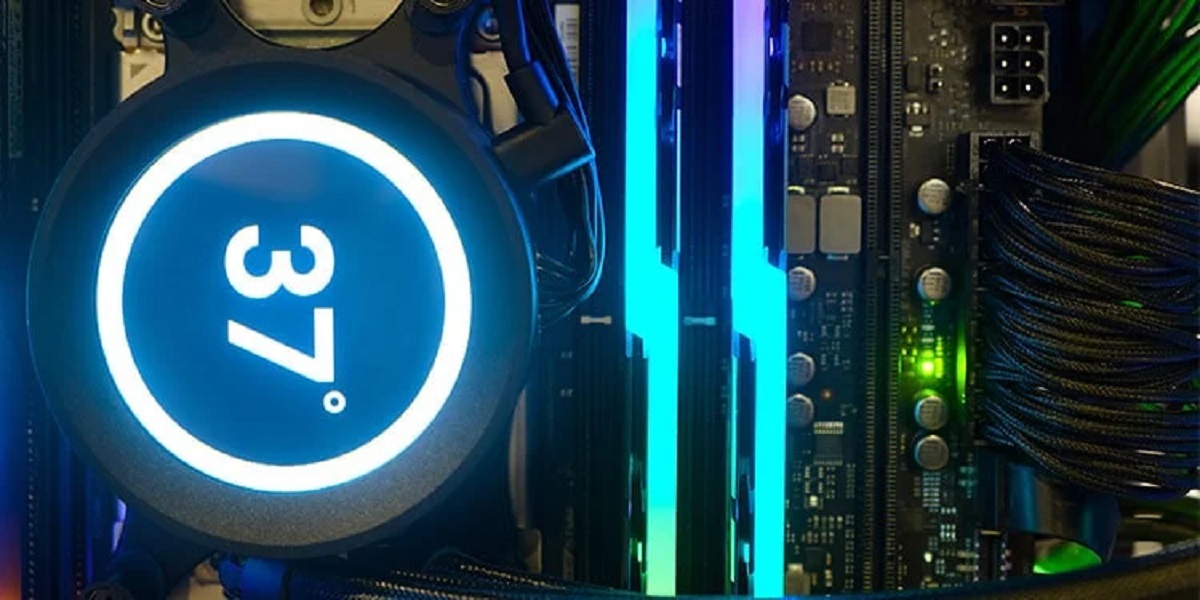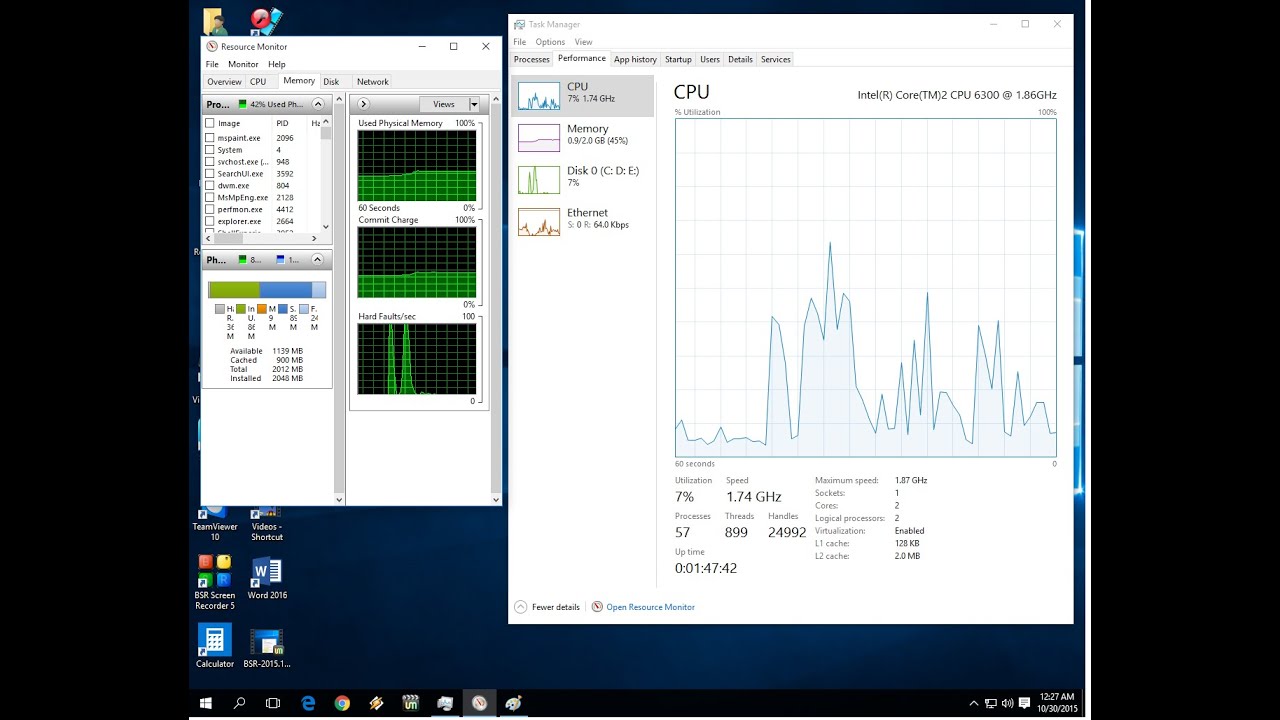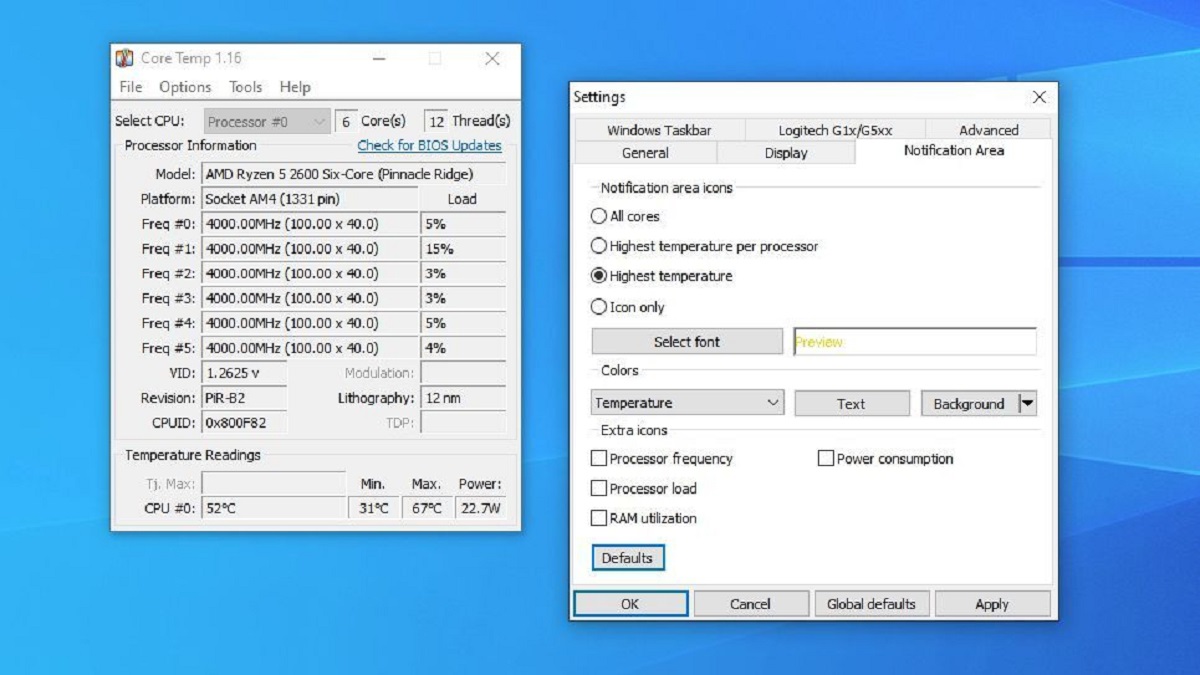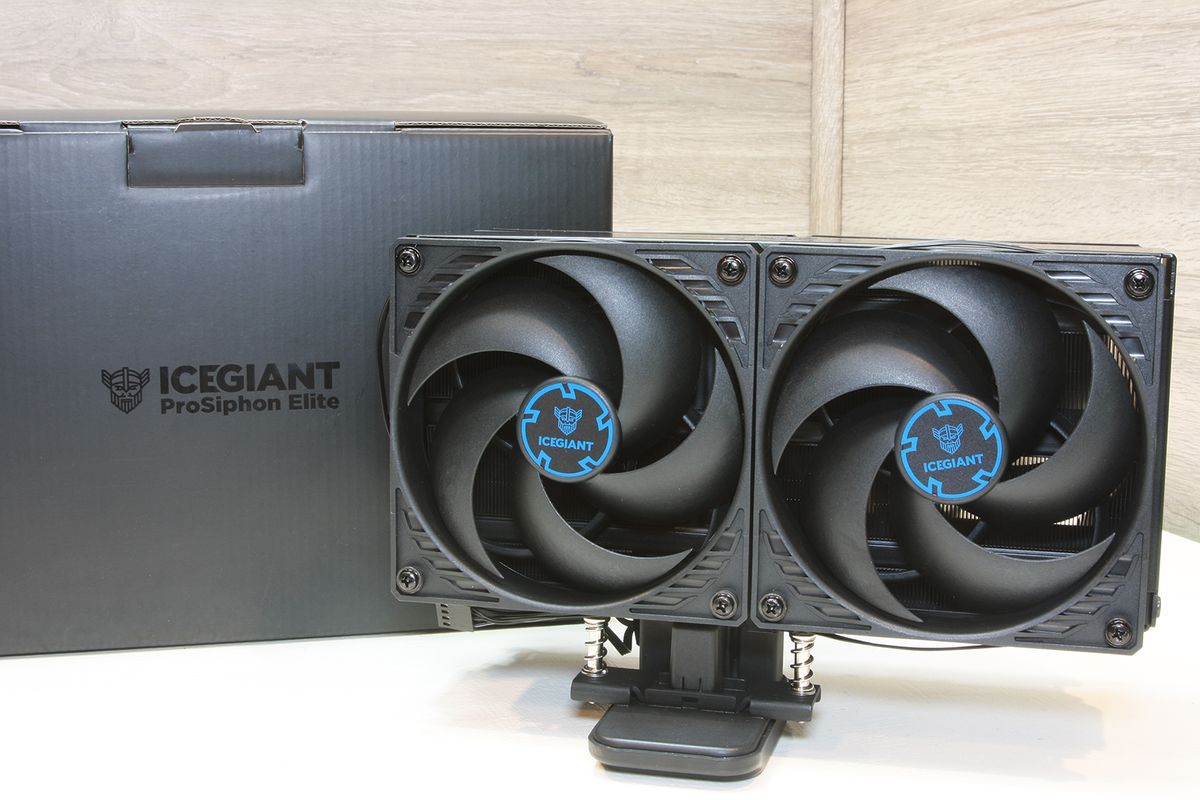What Temp Is Bad For CPU
One of the critical factors to consider when it comes to CPU health and performance is its temperature. While CPUs are designed to handle high temperatures, excessive heat can cause significant damage and affect the overall stability and lifespan of your processor. So, what temperature is considered bad for a CPU?
The answer to this question depends on various factors, including the specific CPU model, its architecture, and the manufacturer’s recommendations. However, as a general rule of thumb, it is essential to keep the temperature of your CPU within a safe operating range.
Typically, most CPUs have a maximum safe temperature limit, known as the Thermal Design Power (TDP) or the Tjunction Max. This value represents the highest temperature at which the CPU can operate without experiencing any adverse effects.
The TDP varies between different CPU models but is usually in the range of 60°C to 90°C (140°F to 194°F). Exceeding this temperature can lead to thermal throttling, where the CPU automatically reduces its performance to lower its temperature and prevent damage. Continuous exposure to high temperatures can eventually result in permanent damage to the CPU.
It is important to note that while CPUs can withstand high temperatures for short durations (known as thermal spikes), prolonged exposure to high temperatures can lead to accelerated degradation of the processor’s internal components.
Factors such as high ambient temperatures, inadequate cooling systems, improper airflow within the computer case, and overclocking can contribute to higher CPU temperatures. It is crucial to address these factors to maintain a safe operating temperature for your CPU.
In some cases, you may notice performance degradation, system crashes, and even sudden shutdowns when the CPU temperature exceeds its recommended limit. These are clear signs that the CPU is running too hot and experiencing thermal issues.
To monitor your CPU temperature, you can utilize various software tools designed to provide real-time temperature readings. These tools can help you keep an eye on your CPU temperature and take necessary measures if it approaches or exceeds the dangerous range.
To keep your CPU cool, you can implement several cooling solutions, including ensuring proper airflow through your computer case, using high-quality CPU coolers, applying thermal paste correctly, and cleaning your computer regularly to prevent dust accumulation.
In essence, while CPUs are designed to handle high operating temperatures, it is crucial to keep them within a safe range to prevent any damage and ensure optimal performance. Being aware of the maximum safe temperature limit for your specific CPU model and taking appropriate measures to maintain a cool operating environment will go a long way in safeguarding your CPU’s health and longevity.
Introduction
CPU (Central Processing Unit) temperature is a crucial aspect of computer performance and longevity. Understanding how temperature affects your CPU and what temperature range is considered safe is essential for keeping your computer running smoothly.
The CPU is the brain of your computer, responsible for executing instructions and performing calculations. As it carries out these tasks, it generates heat. When the temperature of the CPU rises beyond certain limits, it can have detrimental effects on both short-term performance and long-term reliability.
This article will explore the topic of CPU temperature and discuss what temperature range is considered bad for a CPU. We will delve into the factors that affect CPU temperature, the ideal temperature range, the dangers of high CPU temperatures, and how to monitor and keep your CPU cool.
By understanding the relationship between temperature and CPU performance, you can make informed decisions to optimize your computer’s stability and maximize its lifespan.
We will begin by exploring the factors that influence CPU temperature. These factors include the CPU’s design, architecture, clock speed, voltage, and the efficiency and effectiveness of the cooling system. By understanding these factors, you can gain insights into why your CPU may be running at higher or lower temperatures.
Next, we will discuss the ideal temperature range for CPUs. While exact temperature values can vary depending on the CPU model and specifications, there is a generally accepted optimal range for CPU temperature. Operating within this range ensures both performance and longevity.
High CPU temperatures can lead to a variety of issues, including reduced performance, system instability, and even permanent damage to the processor. We will explore the dangers of high CPU temperatures and the potential consequences of ignoring them. Understanding the risks can motivate you to take proactive measures to address overheating issues.
To help you monitor your CPU temperature, we will discuss various tools and methods available. These tools can provide real-time temperature readings, allowing you to keep an eye on your CPU’s temperature and detect any abnormal spikes or sustained high temperatures.
Lastly, we will provide practical tips on how to keep your CPU cool. Implementing effective cooling solutions can prevent your CPU from reaching dangerous temperatures. We will discuss proper airflow management, the use of CPU coolers and thermal paste, and regular cleaning practices to ensure optimal cooling performance.
By the end of this article, you will have a solid understanding of CPU temperature, the risks of high temperatures, and strategies to maintain your CPU within a safe operating range. Let’s dive in!
Understanding CPU Temperatures
When it comes to CPU temperatures, it is important to have a clear understanding of how they are measured and what they represent. CPU temperature refers to the heat generated by the processor during its operation. This temperature is typically measured in degrees Celsius (°C) or Fahrenheit (°F) and indicates the thermal status of the CPU.
CPU temperatures are influenced by several factors, including the workload being performed, the CPU’s clock speed, the voltage applied to the processor, and the effectiveness of the cooling system. As the CPU carries out tasks, it generates heat due to the electrical resistance and switching activity within its transistors.
Monitoring CPU temperature is crucial for ensuring optimal performance and avoiding potential issues. Operating a CPU at excessively high temperatures can result in thermal throttling, where the processor reduces its clock speed to lower its temperature. This not only impacts performance but can also cause system instability.
On the other hand, running a CPU at extremely low temperatures is also not recommended, as it can lead to condensation and potentially damage the sensitive electronic components of the processor. Therefore, maintaining a balanced temperature range is essential.
CPU temperatures can vary significantly depending on the specific CPU model, the applications and tasks being executed, and the ambient temperature of the environment. Different CPUs have different thermal limits, with some models designed to handle higher temperatures than others. Understanding your CPU’s specific thermal characteristics is crucial for determining what temperature range is considered safe.
In addition to the CPU temperature, it is also important to consider the temperature of other components within your computer, such as the motherboard and the graphics card. These components can also generate heat and contribute to the overall temperature inside the computer case.
Monitoring software programs can provide real-time temperature readings for your CPU and other components, allowing you to keep track of their temperatures. Some popular software tools for CPU temperature monitoring include Core Temp, HWMonitor, and SpeedFan. These programs can display temperature values and provide alerts if temperatures reach critical levels.
Understanding CPU temperatures and their impact on performance and system stability is crucial for maintaining the health of your computer. By monitoring and managing your CPU’s temperature, you can ensure optimal performance, prevent overheating-related issues, and prolong the lifespan of your processor.
Factors that Affect CPU Temperature
The temperature of a CPU can be influenced by various factors, all of which play a crucial role in determining the overall thermal performance of the processor. Understanding these factors is essential for effectively managing and maintaining the temperature of your CPU.
1. CPU Design and Architecture: Different CPU models have different designs and architectures that can affect their power consumption and heat generation. CPUs with a higher number of cores or higher clock speeds tend to generate more heat compared to lower-end models.
2. Workload and CPU Utilization: The workload being performed by the CPU directly impacts its temperature. Tasks that require high computational power and put all cores under heavy load can significantly raise the CPU temperature. In contrast, lighter tasks will produce less heat.
3. Overclocking: Overclocking involves running the CPU at higher clock speeds than the manufacturer’s specifications. While this can increase performance, it also increases heat generation. Overclocked CPUs often require more robust cooling solutions to maintain safe temperatures.
4. Voltage and Power Supply: The voltage applied to the CPU can affect its temperature. Higher voltages generally lead to increased heat generation. Additionally, an unstable or inadequate power supply can cause voltage fluctuations that may impact the CPU’s temperature.
5. Cooling System and Thermal Solutions: The cooling system of your computer, including the CPU cooler, case fans, and thermal paste, are crucial for managing CPU temperature. Effective cooling solutions, such as high-quality CPU coolers and proper airflow within the computer case, can help dissipate heat efficiently.
6. Ambient Temperature and Environment: The temperature of the surrounding environment plays a significant role in CPU temperature. High ambient temperatures can make it more challenging for the CPU to dissipate heat effectively, leading to increased temperatures.
7. System Load and Background Processes: Running resource-intensive programs or having numerous background processes can put a higher load on the CPU and generate more heat. It is important to manage your system’s processes and ensure that unnecessary background tasks are minimized.
8. CPU Cooler Maintenance: Over time, dust buildup can hinder the performance of CPU coolers, reducing their cooling efficiency. Regular cleaning and maintenance of the CPU cooler, including removing dust and replacing thermal paste if necessary, can prevent temperature spikes.
By understanding these factors, you can identify potential sources of high CPU temperatures and take appropriate actions to mitigate them. Ensuring proper cooling, maintaining a stable power supply, and managing system load are key strategies for keeping the CPU temperature within a safe range.
Ideal CPU Temperature Range
The ideal CPU temperature range refers to the temperature range in which a CPU can operate optimally without experiencing any adverse effects. While specific CPU models may have slightly different temperature recommendations, there is a generally accepted range that serves as a guideline for CPU temperature optimization.
The ideal CPU temperature range is typically around 40°C to 70°C (104°F to 158°F) during normal operation. Different CPU models may have varying temperature tolerances, and it’s essential to refer to the manufacturer’s guidelines for precise temperature specifications.
Running the CPU within this temperature range ensures that it functions efficiently and reliably. Operating below this range isn’t typically a concern as CPUs are designed to handle lower temperatures without issues. However, running the CPU at extremely low temperatures, approaching or below 0°C (32°F), can lead to condensation, potentially causing damage to the CPU and other components.
On the other end of the spectrum, operating above the recommended temperature range can have adverse effects on CPU performance and longevity. Constant exposure to high temperatures can result in thermal throttling, where the CPU reduces its clock speed to lower the temperature and prevent damage. This can lead to reduced performance and overall system instability.
It’s important to note that the recommended temperature range is most relevant for CPUs under normal operating conditions. Intense workloads or overclocking can lead to higher temperatures, and CPUs designed for these scenarios may have higher temperature tolerances.
When considering the ideal CPU temperature range, it’s also vital to monitor the temperatures of other components within your computer, such as the motherboard and graphics card. These components can also generate heat and contribute to the overall temperature inside the computer case.
Monitoring software programs, such as Core Temp, HWMonitor, or SpeedFan, can provide real-time temperature readings for various components, including the CPU. These programs allow you to keep an eye on the temperatures and detect any significant variations or sustained high temperatures.
Maintaining optimal CPU temperature is crucial for ensuring optimal performance, preventing thermal throttling, and extending the lifespan of the processor. By adhering to the recommended ideal temperature range and implementing effective cooling solutions, you can keep your CPU operating within safe limits and maximize its performance and longevity.
What are the Dangers of High CPU Temperatures
High CPU temperatures can pose various dangers to the performance, stability, and longevity of your computer system. Let’s explore some of the potential risks associated with running a CPU at elevated temperatures.
1. Reduced Performance: When a CPU operates at high temperatures, it may engage a self-defense mechanism called thermal throttling. This feature automatically reduces the clock speed of the CPU to lower its temperature and prevent damage. As a result, your computer’s performance can be severely impacted as the CPU fails to operate at its full potential.
2. System Instability: Overheating CPUs can cause system instability, leading to frequent crashes, freezes, and unexpected shutdowns. When a CPU runs too hot, it can cause errors or inaccuracies in calculations, compromising the stability of the entire system.
3. Hardware Damage: Continuous exposure to high temperatures can lead to permanent damage to the CPU and other system components. Excess heat can degrade the performance and lifespan of electronic components, including transistors and capacitors. Over time, this can result in system failures and the need for expensive repairs or component replacements.
4. Data Loss: High CPU temperatures can contribute to data loss or corruption. In extreme cases, overheating CPUs can cause hard drives to fail or lead to errors in reading and writing data. This can result in the loss of important files, documents, or even the entire operating system.
5. Reduced Lifespan: Prolonged exposure to high temperatures can significantly shorten the lifespan of your CPU. Heat accelerates the aging process of electronic components, causing them to degrade faster. By keeping your CPU within a safe temperature range, you can help extend its lifespan and delay the need for an upgrade or replacement.
6. Inefficiency: CPUs operating at high temperatures consume more power, as additional energy is required to cool down the processor. This increased power consumption can lead to higher utility bills and wasted energy.
To mitigate these dangers, it’s crucial to take necessary measures to manage and reduce CPU temperatures. Implementing effective cooling solutions, ensuring proper airflow within the computer case, and regularly cleaning the cooling components can help maintain safe operating temperatures for your CPU.
Monitoring your CPU temperature regularly using software tools and addressing any overheating issues promptly can protect your system from the dangers associated with high CPU temperatures. By prioritizing temperature management, you can enhance your computer’s performance, stability, and overall longevity.
Signs of an Overheating CPU
An overheating CPU can have adverse effects on the performance and stability of your computer system. It’s important to be aware of the common signs that indicate your CPU may be running too hot. Here are some common signs of an overheating CPU:
1. Frequent System Crashes: One of the most noticeable signs of an overheating CPU is frequent system crashes or sudden restarts. When a CPU gets too hot, it can cause the system to become unstable, leading to crashes as a protective measure to prevent further damage.
2. Constant Fan Noise: If you notice that your computer’s fans are spinning loudly and consistently, it could be a sign that your CPU is overheating. The fans work harder to dissipate the excess heat, resulting in increased noise levels.
3. Slow Performance: When a CPU runs at high temperatures, it may activate thermal throttling, which lowers the clock speed to reduce heat generation. As a result, you may experience significantly reduced performance, with slower response times and delays in executing tasks.
4. System Freezes: Overheating CPUs can cause your computer to freeze, halting all operations. This occurs when the CPU becomes overwhelmed by the heat and is unable to carry out its tasks effectively.
5. Unexpected Shutdowns: If your computer suddenly powers off without warning, it could be a symptom of an overheating CPU. This safety measure is triggered when the CPU reaches critical temperatures to prevent damage to the system.
6. Unusual Error Messages: Overheating CPUs can generate various error messages related to temperature issues. You may receive warnings indicating high CPU temperatures or alerts about thermal events that could potentially damage the CPU.
7. Visible Artifacts or Glitches on the Display: In some cases, an overheating CPU can cause visual artifacts or glitches on your computer’s display. This can manifest as random lines, pixelated images, or screen flickering.
8. Burning Smell or Unusual Odor: In extreme cases, an overheating CPU may emit a distinct burning smell or an unusual odor. This can be a serious indication that the CPU is experiencing severe thermal stress and immediate action should be taken.
If you notice any of these signs, it is crucial to address the overheating issue promptly. Start by checking the airflow in your computer case, cleaning any dust accumulation, and ensuring that all fans are functioning correctly. Additionally, consider investing in better cooling solutions such as high-quality CPU coolers or improving the overall ventilation in your system.
Regularly monitoring your CPU temperature using software tools can help you detect any potential overheating issues before they cause significant damage. By taking these proactive measures, you can protect your CPU and ensure optimal performance and longevity for your computer system.
How to Monitor CPU Temperature
Monitoring your CPU temperature is essential for keeping track of its thermal performance and ensuring it stays within safe operating limits. Thankfully, there are several methods and software tools available to help you monitor your CPU’s temperature effectively. Here are some ways to monitor CPU temperature:
1. Software Tools: Numerous software programs are specifically designed to monitor CPU temperature. These programs provide real-time temperature readings and additional features such as graphs, alerts, and logging capabilities. Some popular CPU temperature monitoring programs include Core Temp, HWMonitor, and SpeedFan. These tools offer a user-friendly interface and allow you to keep a close eye on your CPU’s temperature.
2. BIOS/UEFI: Most modern computer systems allow you to monitor CPU temperature directly from the BIOS/UEFI interface. By accessing the system’s BIOS setup, you can navigate to the hardware monitoring section, where you can find the CPU temperature data. This method is useful if you want to check the temperature before the operating system loads or if you need to perform CPU temperature monitoring in a low-level environment.
3. CPU Temperature Monitoring Apps: If you prefer monitoring CPU temperature on your mobile device, various apps are available for iOS and Android. These apps connect to your computer over a network and display real-time CPU temperature readings on your smartphone or tablet. Examples of such apps include CPU Monitor for iOS and CPU Temperature Monitor for Android.
4. System Monitoring Utilities: Some system monitoring utilities, such as Task Manager (Windows) or Activity Monitor (Mac), offer basic CPU temperature monitoring features. While these built-in utilities may not provide as much detailed information as dedicated software programs, they can still give you a quick overview of your CPU’s temperature.
5. Hardware Monitoring Devices: In addition to software-based solutions, you can also use hardware monitoring devices to monitor CPU temperature. These devices are typically standalone units that connect to your computer’s USB port or motherboard and display real-time temperature readings on an attached screen. While more advanced and often used by enthusiasts, they provide highly accurate temperature measurements.
When monitoring your CPU temperature, it’s important to keep in mind the normal operating range for your specific CPU model. Consult the manufacturer’s documentation or website to determine the acceptable temperature range. If your CPU consistently reaches or exceeds this range, it may indicate an underlying cooling issue that needs to be addressed.
Regularly monitoring your CPU temperature will help you detect any abnormal temperature spikes or sustained high temperatures. By having this monitoring in place, you can take necessary precautions to prevent overheating-related issues and maintain the health and performance of your CPU.
How to Keep Your CPU Cool
Keeping your CPU cool is vital for maintaining optimal performance, stability, and longevity. High temperatures can lead to thermal throttling, reduced performance, and potential damage to your CPU. Fortunately, there are several effective strategies and techniques to help keep your CPU cool. Here are some steps you can take:
1. Proper Case Airflow: Ensure that your computer case has proper airflow. This involves positioning case fans strategically to promote optimal air circulation. Place intake fans at the front or bottom of the case and exhaust fans at the rear or top to create a steady flow of cool air into the case and expel hot air.
2. CPU Cooler: Invest in a high-quality CPU cooler. There are several options available, including air coolers and liquid coolers. Air coolers consist of a heatsink and fan(s) that draw heat away from the CPU, while liquid coolers use circulating coolant to dissipate the heat. Choose a CPU cooler that matches your CPU’s thermal requirements and ensure that it is properly installed and securely mounted.
3. Thermal Paste: Apply thermal paste correctly when installing or reseating your CPU cooler. Thermal paste helps facilitate the transfer of heat between the CPU and the cooler. Ensure that you apply an appropriate amount of thermal paste to create effective thermal conductivity between the two surfaces.
4. Keep Your Computer Clean: Regularly clean your computer’s components, especially the CPU cooler and case fans. Dust buildup can hinder airflow and reduce cooling efficiency. Use compressed air or an anti-static brush to remove dust from the CPU cooler fins, fan blades, and other components. Cleaning your computer at least once every few months is recommended.
5. Avoid Overclocking: Overclocking your CPU increases its clock speed and voltage, resulting in higher heat generation. If you are concerned about heat, consider running your CPU at its default specifications or within safe limits specified by the manufacturer.
6. Monitor Temperature and Fan Speed: Use software tools to monitor your CPU temperature and fan speeds in real-time. This allows you to keep an eye on temperature spikes and adjust fan speeds if necessary. Configure the fan curves in your system’s BIOS or use third-party software to customize fan speed profiles based on temperature thresholds.
7. Consider Additional Cooling Solutions: If you have a high-performance CPU or are engaged in intensive tasks like gaming or video editing, additional cooling solutions may be necessary. These can include adding more case fans, installing aftermarket GPU coolers, or even using cooling pads for laptops.
8. Manage Room Temperature: Keep your computer in a cool and well-ventilated room. High ambient temperatures can affect your CPU’s ability to dissipate heat effectively. Avoid placing your computer near heat sources, such as radiators or direct sunlight.
By implementing these strategies, you can effectively keep your CPU cool and maintain optimal performance and reliability. Regularly monitor your CPU temperature, maintain proper airflow, and clean your computer to ensure efficient cooling. By taking these preventive measures, you can extend the lifespan of your CPU and enjoy a smoother computing experience.
Conclusion
Understanding CPU temperature and how to manage it is crucial for maintaining optimal performance and longevity of your computer system. We explored various aspects related to CPU temperature, including its ideal range, factors that affect it, and the dangers of high temperatures.
By keeping your CPU within the recommended temperature range, you can avoid issues such as thermal throttling, system instability, reduced performance, and hardware damage. Regularly monitoring your CPU temperature using software tools or hardware devices allows you to detect any abnormal temperature spikes and take necessary actions to address cooling issues.
In addition to monitoring, implementing effective cooling strategies is essential. Proper case airflow, investing in high-quality CPU coolers, applying thermal paste correctly, cleaning your computer regularly to prevent dust buildup, and considering additional cooling solutions when needed can all contribute to maintaining safe CPU temperatures.
By taking the necessary steps to keep your CPU cool, you can optimize system performance, avoid unnecessary downtime, and extend the lifespan of your CPU. Keeping an eye on CPU temperature and implementing appropriate cooling measures will contribute to a smoother, more reliable computing experience.
Remember, every computer system is different, and it’s important to consult your CPU manufacturer’s guidelines for specific temperature recommendations. With proper temperature management, you can ensure that your CPU runs efficiently, even during intensive tasks, and enjoy a stable and long-lasting computer system.







